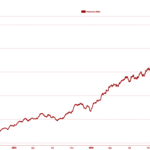
Introduction
The commons are the typical example in which self-interested individual actions do not aggregate into beneficial collective outcomes, as judged by members of the community themselves. They are the main counter-example to Adam Smith’s logic of the invisible hand, according to which self-interested consumer and producer behavior in markets lead to efficient aggregate outcomes (again, as judged by the people themselves).
Examples of tragedies of the commons include: over-grazing pastures, ocean over-fishing, depleting ground water resources, deforestation of communal forests, global warming, under-production of flood protection, free-riding on public irrigation systems (and lack of contributions to repairs), traffic jams on public roads with no congestion pricing, shirking in worker-managed enterprises, under-production in collectivized communist farms, voter rational ignorance in democracies, the difficulty of revolutions in autocratic regimes, etc.
Tragedies of the commons are so ubiquitous in daily life that it’s tempting to ultimately frame any kind of social problem as a type of tragedy of the commons. Two salient features are that they are situations in which it is relatively easy to create the problem (and there are individual-level incentives to create the problem), and it is relatively difficult to organize a solution and profit from delivering a solution. Furthermore, people will often disagree about what exactly needs to be done to fix the problem. Gordon Tullock referred to such problems as “social dilemmas” in Volume 8 of Liberty Fund’s Selected Works of Gordon Tullock, where he highlights the widespread prevalence of conflict and the difficulty of solving such problems purely by means of voluntary cooperation (Tullock 2005).
Governments appear as a possible solution to many social dilemmas because (a) they involve lower organizational costs than the purely private solutions, and (b) they can eliminate free riding by forcing compliance. Indeed, in his initial “Tragedy of the Commons” essay, Garrett Hardin (1969) had argued that we only have two possible solutions: privatization or government control. And considering that the nature of the examples typically precluded privatization, he provided a de facto argument in favor of centralized government control.
“What incentives and knowledge does the government have to set up a good property rights regime, rather than an exploitative one?”
Following the Coasean revolution in law and economics (see Ronald Coase), property rights economics adopted a more sophistical argument than Hardin’s (Alchian and Demsetz 1973; Barzel and Allen 2023; Demsetz 1967). At its best, property rights economics opens the door for explorations of various processes by which property rights regimes are created. Here is where the work of Elinor Ostrom and the Bloomington School provides the best example (Tarko 2017). At its worst, property rights economics remains stuck in Hardin’s box and it is used merely to argue that the task of government is to set up property rights, such that markets can then operate without free riding, and, hence, solve the problems. This is still a step up from Hardin and it has produced important ideas, like cap-and-trade, but it leaves out the key political economy question: What incentives and knowledge does the government have to set up a good property rights regime, rather than an exploitative one? Or in the case of the more simplistic solution proposed by Hardin, what incentives and knowledge does the government have to properly manage a commons?
Government solutions of any kind, including the task of setting up property rights regimes, always come with the danger of government abuse and therefore the problem of getting the incentives right. As James Madison famously put it: “In framing a government which is to be administered by men over men, the great difficulty lies in this: you must first enable the government to control the governed; and in the next place oblige it to control itself” (Federalist #51). If a government is strong enough to curb private violence and solve various social dilemmas by forcing everyone to contribute their “fair share” (hence eliminating free riding), it is also strong enough to abuse its power over those it governs (Buchanan 1975; North, Wallis, and Weingast 2009).
The Ostroms thought the concept of self-governance is helpful precisely for trying to pinpoint the conditions under which governments are more likely to solve problems rather than make matters worse. As Vincent Ostrom (1997) has argued, the stakes of this debate are high: “Democratic societies are necessarily placed at risk when people conceive of their relationships as being grounded on principles of command and control rather than on principles of self-responsibility in self-governing communities” (p. 4).
One under-appreciated mistake down this path of property rights economics is to think of government as analogous to a firm, and citizens as government’s customers. The concept of the firm, as a type of team production, explains the need for hierarchy inside the firm to help solve worker’s shirking (Alchian and Demsetz 1972). However, the team production model should not be applied to societies as wholes, because societies are not integrated teams working together for a common goal. Instead, we should understand citizens as co-producers of rules. Co-production is a term that implies a merger between consumption and production.
As Vincent Ostrom put it, we need,
- A Tocquevillian science of association—a body of knowledge that helps us to understand the nature of social order, and the forms of social interaction that lead to mutual advantage—is the foundation for choosing among the institutional alternatives open to us. Now, it remains to be determined whether human beings can actually use such methods of discussion, reflection, and choice to fashion the future course of human civilization. (Vincent Ostrom, interviewed by Aligica 2003)
The concept of self-governance
Robert Dahl has highlighted the fundamental problem of self-governance as follows: “to live in association with others necessarily requires that (one) must sometimes obey collective decisions that are binding on all members of the association. The problem, then, is to discover a way by which the members of an association may make decisions binding on all and still govern themselves” (Dahl 1989) (p. 89). Similarly, James Buchanan wrote about the “paradox of ‘being governed’”, and pointed out that “the individual does not enter into social contract (with others) for the purpose of imposing constraints on himself”, but in order to “secure the benefits of behavioral limitations on their part” (Buchanan 1975) (p. 136).
Living with others brings about significant benefits, but it requires building consensus about how to govern collective affairs, and about what counts as a collective or private affair, i.e., about the legitimate scope of collective decision-making and, conversely, the extent of the private sphere. Building such a consensus is often far from trivial. It takes time and effort to discuss matters and to negotiate various possible schemes for compensating losses, and, ultimately, consensus might still be impossible due to some irreconcilable values. In the same book about social dilemmas, Tullock also emphasized that conflict is costly, and “(r)egardless of the outcome… the use of resources for this purpose is offsetting and therefore inherently wasteful. Social contrivances for reducing such investment of resources are, on the whole, desirable” (p. 5). How can we discover such institutions setting up the conditions for cooperation and diminishing conflict? The Ostroms thought the answer is to think about how to best enable self-governance.
We can define self-governance as the capacity of a community to live under rules of its own choice, and to produce social-economic outcomes that most members of the community find desirable (Tarko 2021). Self-governance is valuable because it enables a more economically efficient system in the most general sense of the concept: i.e. a system that maximizes preference satisfaction not only with respect to the delivery of various private goods and services, but also with respect to the overall nature of society. Recent Econlib Articles by Rachael La Rose and Byron Carson show how coproduction works in generating public health safety during infectious disease outbreaks. As Tom Christiano put it, “
Co-production and team production
From the point of view of economic theory it is interesting and relevant to compare co-production to team production (Aligica and Tarko 2013). The concept of team production was proposed by Armen Alchian and Harold Demsetz as a way of explaining why firms have hierarchical structures in which managers monitor workers (Alchian and Demsetz 1972). The idea is that most goods are produced as part of a collaborative team, which makes it difficult to measure the labor productivity of each worker purely based on output (the output involves the combined efforts of many workers, which masks the individual efforts of each worker). Such teams face a tragedy of the commons in which each worker is tempted to shirk, leading to decreased output for the team as a whole. The role of managers is to monitor workers in a more direct fashion and ensure maximum productivity.
The key difference between co-production and team production is that “(w)hereas team production involves cooperation for the goal of producing something for an outside consumer, in the case of co-production the good is consumed by the members of the production team. For this reason, the problem of monitoring can be solved more easily in the case of co-production because the agents have a vested interest in having the good produced in the appropriate quantities and qualities.” (Aligica and Tarko 2013) For example, in the case of typical manufacturing, workers are motivated primarily by their wages, and not by benefits from the product. By contrast, in the case of an irrigation project, the contributions to the project are motivated primarily by their own use of the irrigation system. This does not eliminate the temptation for free riding, but it does provide a stronger reason against it.
- “Advocates of centralization confuse co-production with team production and, consequently, inappropriately apply the firm model to public administration.” (Aligica and Tarko 2013)
This Ostromian perspective adds an important participatory element to the concept of self-governance. Citizens are not understood as mere passive consumers of public services provided by governments, in a direct analogy to the market. In a self-governing system, citizens’ participation to the governance of various commons, and solving various social problems, involves more than just voting every few years. This perspective has gathered some attention in the policy arena, for example in discussions of the reform of public services in the United Kingdom (Boyle and Harris 2009). Furthermore, alongside the concern with incentives, Edward J. Lopez (2022) has argued that co-production is also useful for understanding the concept of individual sovereignty and citizenship in terms of creating a better capacity for informed collective decisions. As López (2022) put it, we should think of “communities (as coproducers of) knowledge governance”.
Applying models that work well for understanding markets (i.e., governing the production of private and club goods) to the governing of the commons (i.e., common pool resources and public goods) can seriously back-fire, and lead to what Elinor Ostrom called “crowding out citizenship” (Ostrom 2000). As Vincent Ostrom also put it, “Democratic societies cannot be fashioned without such roots of self-governance…. For this reason, the basic architecture of modern societies must, as Tocqueville has argued, draw upon a science of association to fashion rules of social interaction that apply from the level of the village to the level of the nation state and beyond.” (Aligica 2003).
Conclusion
Robert Bish argued that Ostroms’ project tries to respond to two forms of pessimism, one from Max Weber about the inevitability of hierarchical bureaucratic organizations, and one from Alexis de Tocqueville about the collapse of democracies due to the gradual loss of civic virtues.
On the first one,
- Weber observed that in operation, a bureaucracy becomes rigid, mechanical, and unable to adapt to changing conditions. It is not an ideal way to organize government. In contrast, his model of democratic administration is more responsive to citizens and more adaptable. However, in spite of the desirable characteristics of democratic administration, Weber believed it was not feasible on a large scale, but rather had to be limited to smaller governments. He was pessimistic about large-scale bureaucracies, but did not believe there was an alternative. Weber did not seem to have contemplated Vincent’s polycentricity, or federalism, as the way to govern a large society. (Bish 2014)
One of the key points of the research on polycentricity has, indeed, been to show, first, that, empirically speaking, large scale governments are not in fact hierarchical, but polycentric, and, second, that, from a normative point of view, we should not try to turn them into hierarchical organizations (Tarko 2017). We can say that, although this point is still not widely understood, the Ostroms did indeed successfully counter Weber’s pessimism. The bureaucratic administration is not an inevitability, but a choice made due to a misunderstanding of the nature of complex institutions.
Which brings us to the second issue:
- Tocqueville did not believe citizens understand how democratic administration and multicentered systems work; hence, citizens seek solutions to problems with a single-sovereign bureaucratic approach. Tocqueville believed that the faith in single-sovereign solutions would eventually suffocate the energy of citizens and destroy democratic administration. (Bish 2014)
The Ostroms indeed took this possibility very seriously (V. Ostrom 1997; Vincent and Elinor Ostrom, interviewed by Aligica 2003). Bish recalls that
- Vincent was concerned with what he perceived to be a decline in public participation in civic life, something that went beyond simply participation in governance, and the increasing nationalization of activities that had formerly been left to civic associations or state and local government where citizen participation was much more likely. (Bish 2014)
Their attempt to counteract this tendency ranged from their police and water management studies in the United States and to the management of common-pool resources across the world. The study of common pool resources was part of this broader concern with Tocquevillian self-governance: “My hope is… that the examination and analysis of common-pool resources in the field, in the experimental laboratory, and in theory, contribute to the development of an empirically valid theory of self-organization and self-governance.” (Elinor Ostrom, interviewed by Aligica 2003).
References
Alchian, Armen A., and Harold Demsetz. 1972. “Production, Information Costs, and Economic Organization.” The American Economic Review 62(5): 777–95.
Alchian, Armen A., and Harold Demsetz. 1973. “The Property Right Paradigm.” The Journal of Economic History 33(01): 16–27.
Aligica, Paul Dragos. 2003. Rethinking Institutional Analysis: Interviews with Vincent and Elinor Ostrom. Mercatus Center.
Aligica, Paul Dragos, and Vlad Tarko. 2013. “Co-Production, Polycentricity, and Value Heterogeneity: The Ostroms’ Public Choice Institutionalism Revisited.” American Political Science Review 107(04): 726–741.
Barzel, Yoram, and Douglas W. Allen. 2023. Economic Analysis of Property Rights. 3rd edition. New York, NY: Cambridge University Press.
Bish, Robert L. 2014. “Vincent Ostrom’s Contributions to Political Economy.” Publius: The Journal of Federalism 44(2): 227–48.
Boyle, David, and Michael Harris. 2009. “The Challenge of Co-production: How equal partnerships between professionals and the public are crucial to improving public services.” New Economics Foundation.
Buchanan, James M. 1975. The Limits of Liberty: Between Anarchy and Leviathan. Indianapolis: Liberty Fund, Inc.
Christiano, Thomas. 2005. “Democracy and Bureaucracy.” Philosophy and Phenomenological Research 71(1): 211–211.
Dahl, Robert Alan. 1989. Democracy and Its Critics. New Haven: Yale University Press.
Demsetz, Harold. 1967. “Toward a Theory of Property Rights.” The American Economic Review 57(2): 347–59.
Lopez, Edward J. 2022. “Individual Sovereignty and Coproduction of Knowledge Governance” in Governing Markets as Knowledge Common, edited by Erwin Dekker and Pavel Kuchař. Cambridge University Press.
North, Douglass C., John Joseph Wallis, and Barry R. Weingast. 2009. Violence and Social Orders. New York: Cambridge University Press.
Ostrom, Elinor. 2000. “Crowding out Citizenship.” Scandinavian Political Studies 23(1): 3–16.
Tarko, Vlad. 2017. Elinor Ostrom: An Intellectual Biography. London: Rowman & Littlefield.
Tarko, Vlad. 2021. “Self-Governance, Robust Political Economy, and the Reform of Public Administration.” Social Philosophy and Policy 38(1): 170–97.
Tullock, Gordon. 2005. The Social Dilemma: Of Autocracy, Revolution, Coup D’Etat, and War. Indianapolis: Liberty Fund.
*Vlad Tarko is Associate Professor of Political Economy at University of Arizona. This essay is based on the author’s forthcoming chapter in Polycentric Governance from a Philosophical and Political Perspective, edited by Pablo Paniagua and David Thunder (Rowman and Littlefield).








